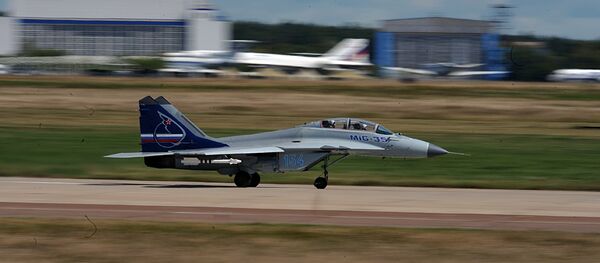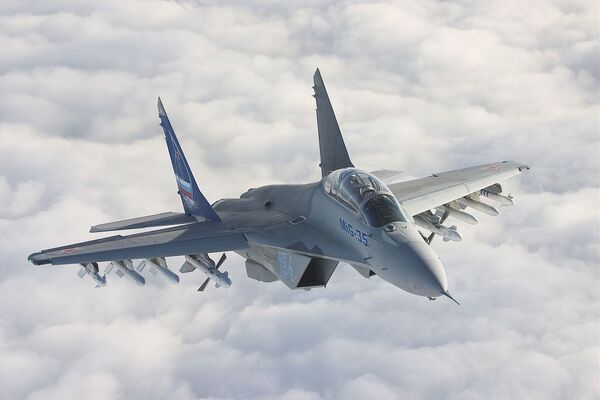The MiG-35 is able to detect and destroy aerial, ground and surface targets, the manufacturer's CEO told journalists.
"It has a necessary set of avionics enabling the use of all means of currently available air weapons against aerial, ground and surface targets."
A deep development of the MiG-29 family, the advanced jet can simultaneously lock on to 10 targets and can engage up to six of them. In contrast with its predecessors, the MiG-35 made significant evolutionary steps:
• It carries more weapons;
• Flight costs 2,5 times less;
• Pilots use helmet imaging systems;
• The plane carries more fuel and can participate in air refueling as both "recipient" and "donor";
• The MiG-35 is equipped with a very sophisticated electronic warfare system and an anti-missile system;
• It has a range of the 5th generation aircraft characteristics etc.
"We attribute the plane to the 4th++ generation which means it has some features of the 5th generation aircraft such as stealthiness and multitasking functionality," Sergei Korotkov added.
The JSC Russian Aircraft Corporation MiG expects to sign a contract on the delivery of the planes later in 2016. The aircraft will enter the Aerospace Forces' ranks in 2018-2020.
The MiG-35 aircraft was first presented internationally during the Aero India 2007 air show.
Another Russian 4th++ generation combat plane, the supermaneuverable Su-35, is already being supplied to the Aerospace Forces and has even participated in Moscow's counterterrorism campaign in Syria.


